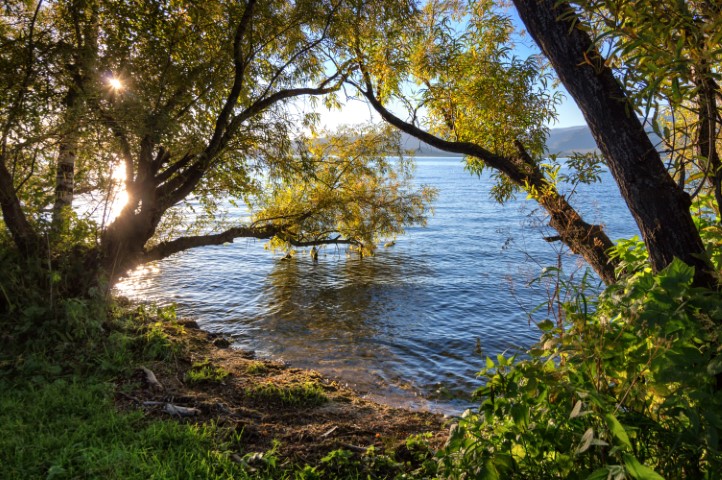
Policy Developments in the Caucasus and Central Asia

Forest landscape restoration endeavours are not new in the Caucasus and Central Asia. For many years conservation, afforestation and reforestation activities have been carried out in the region, with mixed results.
Most restoration activities have been supported by projects under the responsibility of the respective national forest agencies. Lessons from the last two decades, in the region and globally, clearly show that an integrated approach for forest landscape restoration, which takes into consideration the capacity and needs of all main stakeholders in the region, needs to be adopted to successfully revert forest and other wooded lands' degradation on a large scale.
Advancing Policy Development
The Bonn Challenge, a global effort to bring 350 million ha of degraded and deforested land into restoration by 2030 and ECCA30, a regional forest restoration initiative of Europe, the Caucasus and Central Asia with a 30 million hectare target by 2030, have triggered regional policy developments in forest landscape restoration in the Caucasus and Central Asia.
In preparation for the Ministerial Roundtable on Forest Landscape Restoration in the Caucasus and Central Asia – a first endeavour to contribute and reinforce global efforts within the Bonn Challenge and the ECCA30 – a background study on Forest Landscape Restoration in the Caucasus and Central Asia was prepared.

The Forest Landscape Restoration in the Caucasus and Central Asia study identifies key drivers of forest degradation and distinguishes the restoration potential in the region. The study was undertaken to support the preparation of restoration pledges in the eight countries of the Caucasus and Central Asia in the run up to the Ministerial Roundtable on Forest Landscape Restoration and the Bonn Challenge that took place in June 2018 in Astana, Kazakhstan.
Read more here.
Aligning National and Regional Efforts
The Ministerial Roundtable on Forest Landscape Restoration and the Bonn Challenge in the Caucasus and Central Asia, organised in in Astana, Kazakhstan (June 2018) provided the first opportunity to align national and regional efforts with international objectives.
The Roundtable adopted the Astana Resolution, wherein countries committed to identify degraded lands, work to restore and afforest them by 2030, assess the national potential for forest landscape restoration, reinforce regional cooperation on forest landscape restoration, call on development partners to support efforts and investment in forest landscape restoration, facilitate access to external investment opportunities, cooperate among interested partners and periodically assess the efforts in order to voluntarily monitor and report progress towards forest landscape restoration targets in the Caucasus and Central Asia.
Armenia, Georgia, Kazakhstan, Kyrgyzstan, Tajikistan and Uzbekistan committed to restore over 2.5 million hectares of forest landscape by 2030. Azerbaijan joined the initiative during the Forest Congress for the Caucasus and Central Asia (May 2019), bringing the region’s commitments to restore degraded land to about 3 million ha.
The restoration commitments of the the Caucasus and Central Asia countries were further discussed at the Global Landscape Forum (December 2018), where countries declared to strengthen regional partnerships and reinforce regional cooperation, in particular through policy dialogues, forest landscape restoration joint programming, mobilising international and national financing, etc.
In the last years exhaustive guidelines and capacity development programs and events have been organised in the region to strengthen forest restoration efforts with the support of international donors, including UNECE and FAO.
Framework: National Policy Guiding Principles for Forest Landscape Restoration
The National Policy Guiding Principles for Forest Landscape Restoration were developed with the support of the UNECE and FAO Joint Forestry and Timber Section to help countries in the region to deliver on their Bonn Challenge commitments within the UN Decade on Ecosystem Restoration 2021-2030.
The National Policy Guiding Principles (NPGPs) provide a simple framework to guide forest policy makers in the countries of the region in designing their national forest landscape restoration policies, with clear objectives and vision, which in turn facilitate the development of national strategies for implementation of forest landscape restoration. The National Policy Guiding Principles consist of seven thematic guiding principles and eight cross-cutting principles.
-
 Seven guiding principles
Seven guiding principlesThe National Policy Guiding Principles distinguish seven guiding principles basic ideas or rules explaining how FLR should work. Each principle consists of a rationale, followed by a set of proposed criteria and the expected benefits.
-
 Eight cross-cutting principles
Eight cross-cutting principlesThe National Policy Guiding Principles distinguish eight cross-cutting principles to be respected in FLR strategies to improve restoration outcomes and to maximize net gain for FLR and human health and well-being. Each principle consists of a rationale, followed by a set of proposed criteria and the expected benefits
Expected benefits of applying the National Policy Guiding Principles (NPGPs) are the following:
- easy framework for streamlined policy and strategy development as NPGPs help in identifying potential gaps and overlaps in related national landscape restoration policies and catalyse synergies for the achievement of forest landscape restoration objectives.
- broad stakeholders’ support at national level to achieve large scale and sustainably restored forest landscapes consistent with a country’s unique history, culture, resources and aspirations.
- higher visibility at national, regional and global levels due to strong elements of monitoring, awareness sharing and knowledge management, which could continuously attract more interest and support.
- increased funding opportunities as a clear and well-articulated FLR policy and strategy, based on the NPGPs, will facilitate access to funding from donors who are looking for such integrated approaches that maximize the chance of success and thus, a positive return on investment.
- effective contributions to international commitments in ecosystem restoration and towards attaining the SDGs and the commitments made under the NDCs to reduce GHG emissions.
Full text of the National Policy Guiding Principles for Forest Landscape Restoration in the Caucasus and Central Asia can be found here.